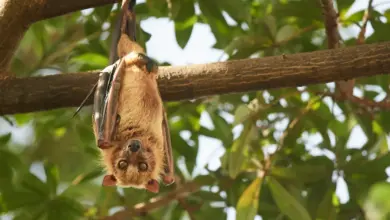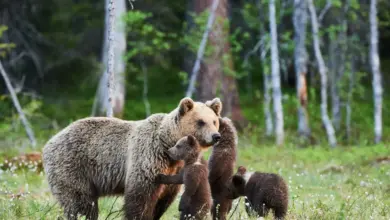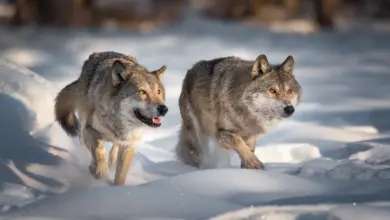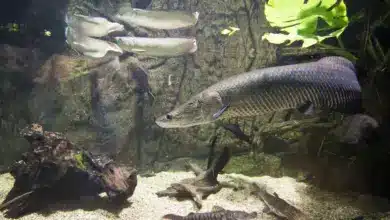Amazon Fish Indigenous New York Times
Amazon Fish & Tribe Survive, If Not Thrive, In Spite of "Green" Reporting
Although the fishing, and life in general, in Brazil’s vast Xingu National Park is much harder than it once was due to rapidly changing environmental conditions, the native Kamayurá people still have enough to eat, friends of the tribe assure us. One friend adds that the Indians also have a fondness for telling tall-ish tales to visiting newspaper reporters . . .
A New York Times Reporter Gets “Punked” By An Amazon Tribe—And Misses The Complexity Of A Region’s Environmental Problems
BY PAUL GUERNSEY

A New York Times environmental reporter visited Brazil’s Kamayurá Indian tribe last June to research an article about global climate change and came away with a page-one story of an Amazon rainforest people seemingly on the edge of starvation. She pinned the tribe’s woes on “hotter and drier” conditions throughout the Amazon that had “decimated” the fish stocks they depend on to survive.
But the Texas-born Brazilian rancher who took Elisabeth Rosenthal to see the Kamayurá told All About Wildlife.com that in their conversations with the reporter, the Indians innocently spoofed her about their “hunger” by telling her a few tall tales.
One of the things the reporter implied in her July 24 front-page Times article was that hunger had reduced Kamayurá children to eating ants. She also quoted the tribe’s chief as saying that the ants themselves were becoming scarce, and that, while monkey meat provided another alternative to fish, the carcasses of 30 monkeys were required to satisfy a person’s hunger.
Ms. Rosenthal also failed to make important distinctions between conditions in the southerly upper Xingu region, where the Kamayurá live, and conditions throughout the rest of the Amazon. For instance, scientists who work in the Brazilian rainforest told us that, while the upper Xingu has experienced several years of below-normal rainfall, there is scant evidence to say that the greater Amazon has yet become “drier and hotter.” And Amazon fish, for the most part, are still doing just fine. Further, an array of factors seems to be at play in the problems facing the Kamayurá and their fisheries, with the drought being just one of them.
Falling Into A Cultural Chasm
Ms. Rosenthal reported that the Indians spoke to her in Portuguese, and that she conversed with them through an interpreter.
The reporter was escorted on her trip by rancher, bush pilot and conservationist John Carter. Mr. Carter, who speaks fluent Portuguese and is a close friend of the tribe, said that, among other tales, tribal members exaggerated the extent to which fish numbers have dwindled in the rivers and lakes of Xingu National Park in the Brazilian State of Mato Grosso, as well as the toll that several seasons of poor fishing have taken on the tribe’s well-being.
Exaggeration, he said, is a part of Kamayurá culture.
In addition, the Kamayurá are not entirely dependent on farming, fishing and hunting monkeys to survive. An American scientist who works closely with Mr. Carter and has visited the Indians on a number of occasions told us the tribe has made part of its living entertaining tourists whom Mr. Carter takes to see them.
“They’ve actually had a very productive relationship with John Carter’s tourism business,” said Dr. Daniel Nepstad, a tropical ecologist who is a senior scientist with the Amazon Program at the Woods Hole Research Center (WHRC) in Massachusetts. When a tour group arrives at the Kamayurá camp, “they can get $15,000 in two nights,” Dr. Nepstad told us in a telephone interview.
The good news is that the Kamayurá and their children are not teetering on the edge of starvation—far from it, according to Mr. Carter. And while the fishing recently has been lousy in the Xingu region, there has been no catastrophic collapse of fish stocks in the greater Amazon. None of this is to say, however, that the world’s largest rain forest, or the native peoples who live there, do not face daunting environmental problems, including the prospect of devastating climate change.
In her article entitled “An Amazon Culture Withers as Food Dries Up,” Ms. Rosenthal quoted the chief, Kotok, as saying, “Us old monkeys can take the hunger, but the little ones suffer—they’re always asking for fish.”
In one of several examples of hunger among tribal members, including the monkey-meat anecdote, the article says, “To make do without fish, Kamayurá children are eating ants on their traditional spongy flatbread, made from tropical casava flour.”
“Clearly, fish stocks have gone down,” in and around Xingu National Park, said Mr. Carter, who has known the Kamayurá for almost the entire 14 years that he has been ranching in Mato Grosso, which contains part of the southernmost extremity of the Amazon rain forest. Mr. Carter told us he was even given his own tribal name by the group. His cattle ranch, Esperança, is located 100 miles—a short bush-plane hop—from the huge park, twice the size of Massachusetts and a little smaller than Denmark, which about 500 Kamayurá share with more than a dozen other tribes.
But Mr. Carter emphatically denied that fish have all but disappeared, and he says his Kamayurá friends are still finding plenty to eat.
“Yet the Indians are still healthy, ‘fat and cocky’ I like to tell them,” Mr. Carter said in an interview conducted via an exchange of e-mails.
Mr. Carter explained, “The NYT’s journalist also took things for fact when, many times, Indians exaggerate without even knowing it. They live in a mythical world and it takes a lot of experience to be able to separate the wheat from the chaff.
“As I did not want to influence the writer in any way, I kept my mouth shut. The part about eating ants is true, for example, but they always eat ants. The kids treat ants as lemon drops, they eat all they can get,” said Mr. Carter, who In addition to being a rancher and ecotourism operator is the director and, along with Dr. Nepstad, co-founder of Aliança da Terra, a conservation organization that encourages Brazilian ranchers to take care of the environment.
In fact, one species of Amazon rainforest ant, myrmelachista schumanni, is nicknamed the “lemon ant” because of its tart flavor.
According to Dr. Nepstad, some fish species the Kamayurá like to eat have been more affected by environmental changes than others. For instance, while tucunare, or peacock bass, have been scarce in recent years, rays, which are staple food for the tribe, “are doing pretty well,” he said.
What Scientists And Conservationists Say: A Tangled Web Of Factors
Along with its complicated cross-cultural communications problems, the Times article also stated, “Deforestation and, some scientists contend, global climate change are making the Amazon region drier and hotter, decimating fish stocks in this area and imperiling the Kamayurá’s very existence.”

Nowhere, however, did the article include quotes from a scientist familiar with how climate change and other environmental problems might be affecting the Amazon. The only scientist who was quoted was an anthropologist who talked about how global warming is affecting Native people in or near the Arctic—a region where scientists say climate change is much more pronounced than anywhere else on the planet except the Antarctic.
According to Mr. Carter, deforestation in the rapidly-developing area around Xingu National Park—in particular, the siltation of waterways that occurs when riverbanks are deforested—has definitely played a role in the reduction of the numbers of fish available to the Kamayurá and other tribes. He also notes that weather patterns in the area have been erratic during recent years. But he stressed that the fish-population problem is a complex one, and “drier and hotter” conditions are not necessarily the first culprits that come to his mind.
“The problem is that it is very hard to determine what is causing it. On one hand you have Indians who used to move their villages from place to place and now they are stable in one spot, creating more direct pressure on the natural resources in the immediate vicinity of their villages. Also, you have the construction of a small hydroelectric plant upstream, the deforestation of the forests around the park and subsequent silting, the use of herbicides and pesticides, the building of thousands of small dams to create lakes and ponds for cattle to drink out of (affecting fish reproduction).”
In recent decades, cattle ranches have multiplied in Mato Grosso, and much land has been cleared to make way for soybean production. As many as 10,000 small dams have been built on tributaries in the upper Xingu region. Dams are a major factor in fish abundance worldwide because they restrict the movement of fish up and down waterways, and often prevent them from reaching spawning areas.
Mr. Carter said, “There is no doubt in my mind that there are a lot fewer fish today than there were 14 years ago when I first visited (the Kamayurá). What I am hesitant to say is that the fish stocks have crashed due to ‘x-y-z.'”
WHRC Amazon Program co-director Dr. David McGrath told us that, except for the over-exploitation of a few commercial species, fish stocks throughout the greater Amazon rainforest region have not been noticeably affected by climatic conditions or anything else. “In terms of actual threats to the viability of commercial fisheries, we’re not there yet,” he said.
Dr. McGrath said that, along with the ones mentioned by Mr. Carter, non-climate-related factors affecting Amazon fisheries included mercury pollution that comes as a byproduct of gold mining, the lack of sewage treatment facilities in Amazon cities and towns, lax fisheries regulation and enforcement and the fact that a period of lower water levels can concentrate fish populations and make them much more vulnerable to overfishing.
In addition, both Dr. McGrath and Dr. Michael Coe, another WHRC scientist who studies Amazon deforestation and climate change, said that while Brazil’s upper Xingu region has been experiencing a localized drought for the past several years, there is no proof the entire Amazon region is drier and hotter—although it is likely to become so in the future. In fact, although the greater Amazon experienced a devastating drought accompanied by wildfires in 2005, this year much of the Amazon experienced record-high flooding.

Dr. Coe concurred with Mr. Carter that, as tempting as it is to pin the problems in the upper Xingu region on global climate change, the scientific evidence is not strong. In fact, Dr. Coe said, the “hotter and drier” part of the Xingu equation may be part of a natural 30-year weather cycle. He said rainfall records show that the upper Xingu region seems to go through years-long natural periods of alternately wet and dry weather, and that the current dry spell may be a normal part of one of those cycles.
According to Dr. Coe, in the southern Amazon region, “Every 25 to 30 years you have a stretch that’s dry and a stretch that’s wet. It certainly looks to me like this is one of the dry periods.”
Unlike the Arctic and the Antarctic, where indisputable climate change is occurring more rapidly than at other latitudes, the long-term effects of global warming on the world’s tropical regions have so far been harder to pinpoint, the scientists said.
But Dr. Coe is quick to add that human activity, including deforestation and global climate change, probably is playing a role in the upper Xingu region’s localized drought. “Part of it is probably human induced. At some point we should see a decline in rainfall with deforestation. But in the end, I still think we have to be cautious about attributing causes.”
For his part, Dr. Nepstad is not quite as cautious. He said that, while there is not yet a scientific smoking gun definitively linking the Xingu region’s strange weather of recent years to global warming, “the changes in climate we are seeing in Mato Grosso are consistent with global climate change.”
Dr. Nepstad adds, however, that the overall climate-change causation picture is clouded by the haze of smoke from agricultural fires that frequently hangs over Mato Grosso. He said scientific evidence indicates that when smoke mixes with the water vapor in clouds, it can keep rain from falling, and this local phenomenon may be playing a significant role in the upper Xingu’s weather woes.
Regardless of what is or isn’t happening in the Xingu region right now, the WHRC scientists all agreed that the question is when, rather than if, permanent climate change will become apparent in the Amazon. Dr. McGrath and Dr. Coe said that one alarming harbinger was the massive, Amazon-wide drought, accompanied by human-induced wildfires, that occurred in 2005. Dr. Coe said the drought was almost certainly tied to steadily rising temperatures in the tropical North Atlantic Ocean, which appear to be the result of atmospheric increases in carbon dioxide.
“With warmer temperatures in the tropical North Atlantic, you get less rainfall in the southern Amazon,” he said.
In other words, even though this year much of the Amazon experienced the highest flooding in a century, and many of the current problems in the upper Xingu and other areas are the result of environmental factors other than climate change, that does not mean the world should not be taking powerful steps to reduce greenhouse gas emissions. Dr. Coe likened the potential for drastic, human-induced climate change to a loaded gun pointed at the world’s largest rain forest.
“Right now,” he said, “We just keep loading the gun.”
As for the waters and fish of the upper Xingu and the people, such as the Kamayurá, who depend on them, John Carter is guardedly optimistic that, with proper management and a change of habits, the future may hold better things.
“Personally, I feel that the fish counts have gone down but that, if given a chance, nature will bounce back quickly. I believe that the possible threats to the fish, including the Indians themselves and their growing food needs, may be dealt with and solved.”
“The Indians could raise fish in their lake in netted tanks. The ranchers and farmers could reforest their riparian zones. (In fact) they are doing so at an exponential rate today.”



